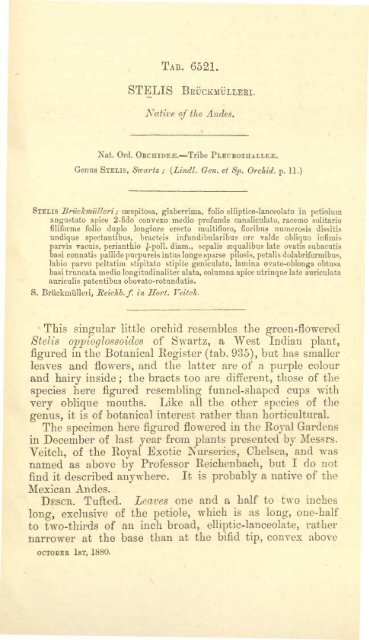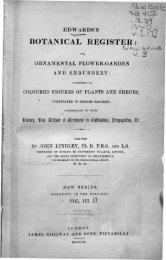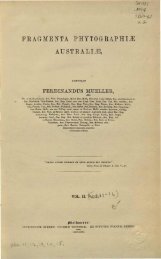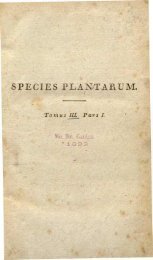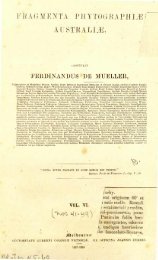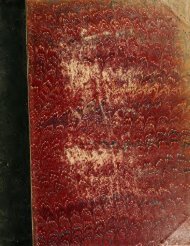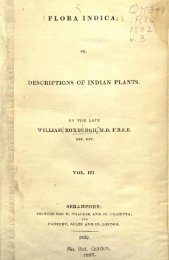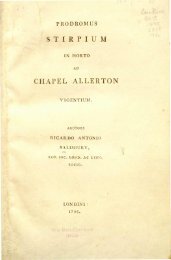Botanical Magazine 106 - 1880.pdf - hibiscus.org
Botanical Magazine 106 - 1880.pdf - hibiscus.org
Botanical Magazine 106 - 1880.pdf - hibiscus.org
You also want an ePaper? Increase the reach of your titles
YUMPU automatically turns print PDFs into web optimized ePapers that Google loves.
TAB. 6521.<br />
STELIS BEüCKMüLLEEI.<br />
Native of the Andes.<br />
Nat. Ord. OECHIDE^:.•Tribe PLEUBOTHALLE-E.<br />
Genus STELIS, Sicartz ; {Lindl. Gen. et &p. Orchid, p. 11.)<br />
STELIS Brückmülleri ; c•spitosa, glaberrima, folio elliptice-lanceolato in petiolum<br />
angustato apice 2-fido convexo medio profunde canaliculato, racemo solitario<br />
filiforme folio duplo longiore erecto multifloro, floribus numerosis dissitis<br />
undique spectantibus, bracteis infundibularibus ore valde obliquo infimis<br />
parvis vacuis, perianthio |-poll. diam., sepalis Eequalibus late ovatis subacutis<br />
basi connatis pallide purpureis intus longe sparse pilosis, petalis dolabriformibus,<br />
labio parvo peltatim stipitato stipite geniculato, lamina ovato-oblonga obtusa<br />
basi truncata medio longitudinaliter alata, columna apice utrinque late auriculata<br />
auriculis patentibus obovato-rotundatis.<br />
S. Brückmülleri, Reichb.f. in Sort. Veitch.<br />
This singular little orchid resembles the green-flowered<br />
Stelis oppioglossoides of Swartz, a West Indian plant,<br />
figured in the <strong>Botanical</strong> Register (tab. 935), but has smaller<br />
leaves and flowers, and the latter are of a purple colour<br />
and hairy inside ; the bracts too are different, those of the<br />
species here figured resembling funnel-shaped cups with<br />
very oblique mouths. Like all the other species of the<br />
genus, it is of botanical interest rather than horticultural.<br />
The specimen here figured flowered in the Eoyal Gardens<br />
in December of last year from plants presented by Messrs.<br />
Veitch, of the Royal Exotic Nurseries, Chelsea, and was<br />
named as above by Professor Reichenbach, but I do not<br />
find it described anywhere. It is probably a native of the<br />
Mexican Andes.<br />
DESCR. Tufted. Leaves one and a half to two inches<br />
long, exclusive of the petiole, which is as long, one-half<br />
to two-thirds of an inch broad, elliptic-lanceolate, rather<br />
narrower at the base than at the bifid tip, convex above<br />
OCTOEEB 1ST, 1880.


